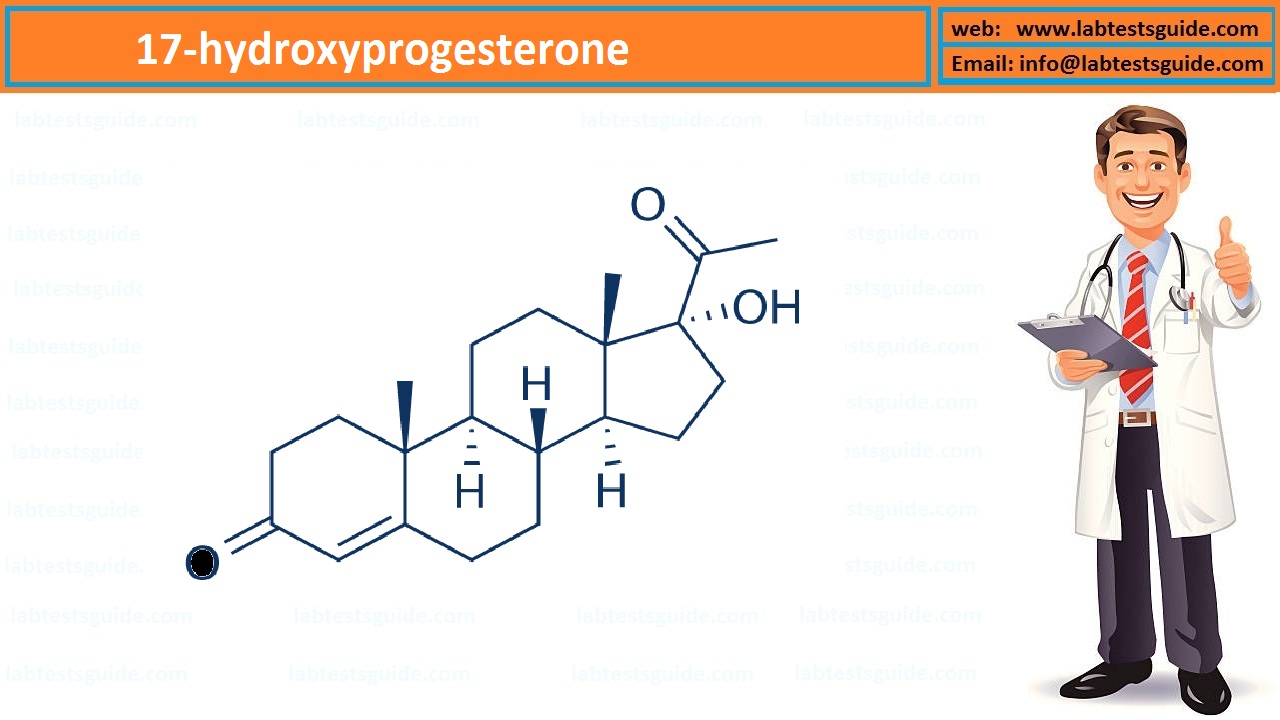
Also Known As: 17-OHP, 17-OH Progesterone, 17α-Hydroxyprogesterone , 17α–OHP, HOP
17α-Hydroxyprogesterone is an endogenous progestogen steroid hormone related to progesterone. It is also a chemical intermediate in the biosynthesis of many other endogenous steroids, including androgens, estrogens, glucocorticoids, and mineralocorticoids, as well as neurosteroids.

This hormone is produced by the adrenal glands. These are two small glands. One is at the top of each kidney. Together with special enzymes or proteins, progesterone 17-OH is converted into a hormone called cortisol. Cortisol is constantly released in varying amounts, but high levels are released at times of physical or emotional stress. Cortisol is also important for regulating metabolism and the immune system.
Why Test Performed :
The 17-OH progesterone test is important for all newborn babies. However, the test should also be considered for anyone who develops symptoms of CAH later in life.
When To Get Tested?
As part of a routine newborn test when a baby’s sex is not obvious (ambiguous genitals); when a woman has increased facial and body hair growth (hirsutism) or other symptoms that could be related to elevated male sex hormones; when a child has premature sexual development; periodically to control the treatment of CAH.
Sample Required:
The specimen type is serum. Acceptable containers are lavender- (EDTA), pink- (K2EDTA), or green-topped (sodium or lithium heparin) tubes.
Sample Stability :
- 48 hours at 16°C to 25°C.
- 1 Week at 2°C to 8°C.
- 6Months to 1 Year at -5°C to 0°C.
Test Prepration:
No Need any Prepration for This Test.
Normal Range :
- Cord blood: 1000-3000 ng/dL
- Newborns: < 630 ng/dL (> 630 ng/dL may be seen in preterm infants, but > 1000 ng/dL is uncommon)
- Prepubertal males: < 110 ng/dL
- Adult males: < 220 ng/dL
- Prepubertal females: < 100 ng/dL
- Follicular (in females): < 80 ng/dL
- Luteal (in females): < 285 ng/dL
- Postmenopausal females: < 51 ng/dL
RELATED POSTS
View all
